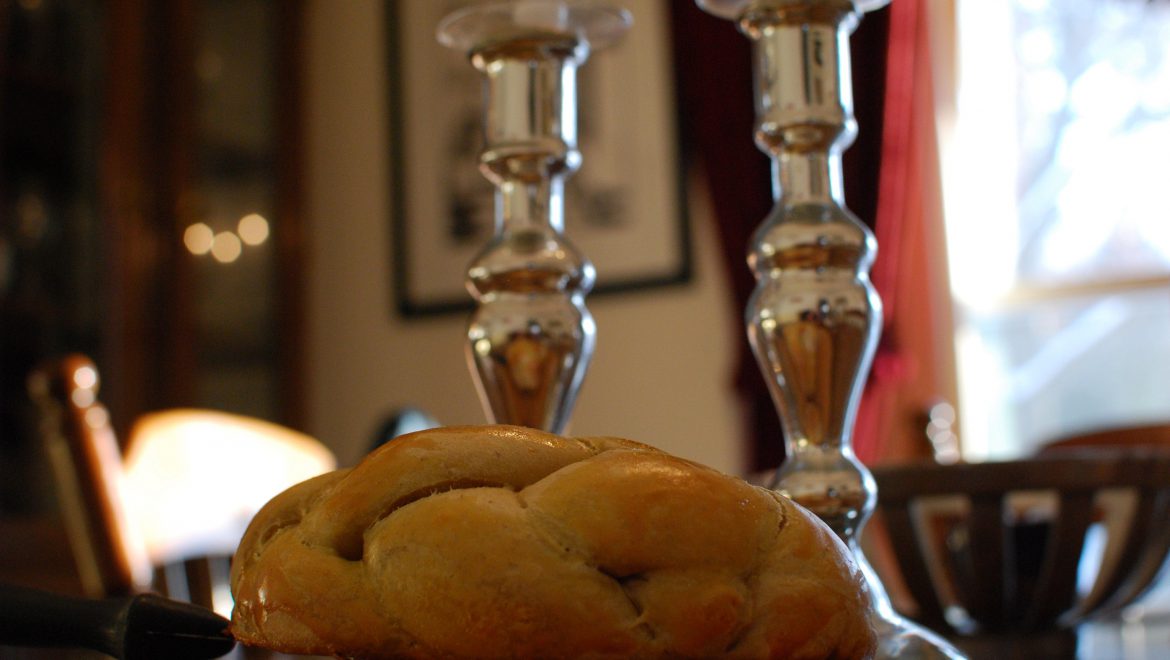
In this short post, Sarah Fishman describes the basics of the candle lighting ceremony, as part of an article introducing the Shabbat home rituals of candle lighting, kiddush over wine, and challah (bread). The author, a rabbinical student at Hebrew Union College-Jewish Institute of Religion in New York, includes the origins and instructions of how to perform the rituals, as well as some of the deeper meanings behind them. This article is from ReformJudaism.org.
Shabbat Home Ritual
I can still smell the Shabbatot of my childhood home. My mother’s chicken roasting in the oven, the smoke from the match that ignited our Shabbat candles, the sweet raisin challah my father bought at Zaro’s Bakery on his way home from work. Indeed, Shabbat at home is often sanctified through food, ritual and familial togetherness. Although a wonderfully diverse array of Shabbat practices exist among today’s Jewish families, disparate Shabbat tables coalesce around the following rituals, creating a vibrant tapestry of Jewish peoplehood and tradition.
Nerot: Lighting the Shabbat Candles
Candle lighting signifies the onset of Shabbat and the conclusion of a hectic workweek. As the Sabbath lights are kindled and the blessing is recited, a moment of familial and individual transformation occurs. The flame kindles holiness, peace and joy within the home, and the proclamation of the blessing signifies one’s personal acknowledgement of Shabbat. Upon igniting the Sabbath lights we are reminded of God’s first act of creation. As Abraham Joshua Heschel writes, “Just as creation began with the word, ‘Let there be light!’ – so does the celebration of creation begin with the kindling of lights.” It is traditional to light two candles prior to sunset. Eliezer b. Joel Halevi (Ravya, twelfth-thirteenth centuries) first noted this custom, suggesting that it reflects the biblical commandments to “guard” (shamor) and “remember” (zakhor) Shabbat. These commandments are also referenced in Lecha Dodi, our Kabbalat Shabbat prayer welcoming the Sabbath bride.


